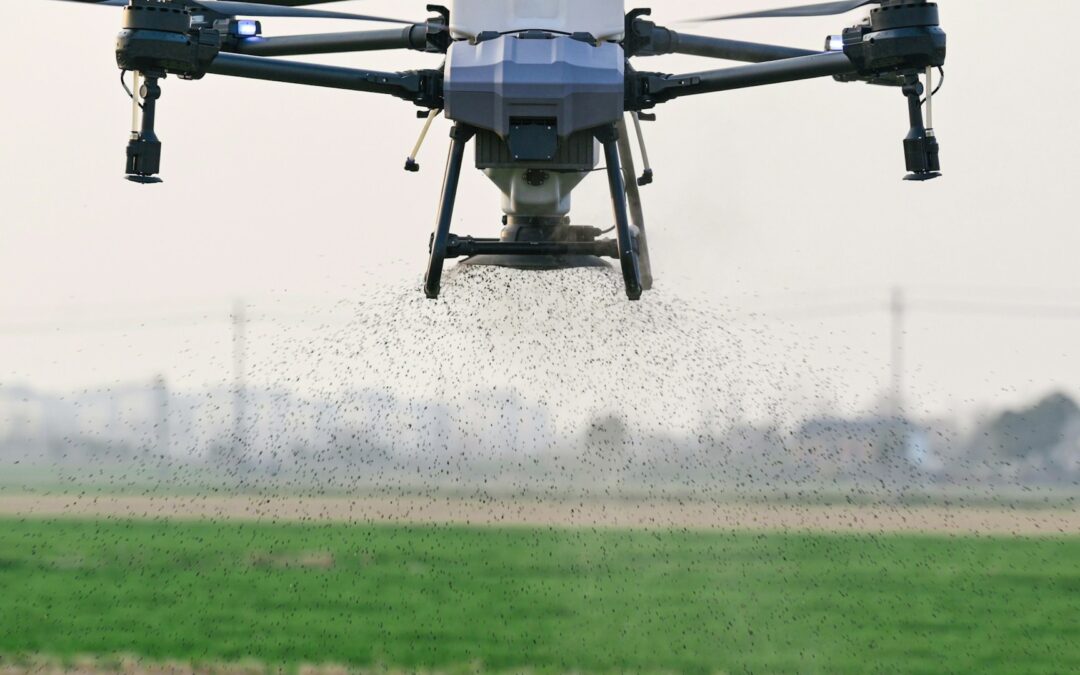The world of agriculture has seen quite the transformation with the introduction of drones. These flying helpers, especially fertilizer drones, have brought significant advancements to modern farming practices. By hovering across fields and distributing nutrients, they save time and labor, making crop management much more efficient. But as fantastic as this technology is, there can be hiccups along the way, notably when fertilizer drones don’t deliver nutrients evenly.
Finding the reason for uneven distribution is a headache many Louisiana farmers might be familiar with. This challenge affects crop health and potential yield, reminding us why it’s key to get things right the first time. Understanding the problem is the first step in tackling it head-on and ensuring your crops receive the nourishment they need to thrive.
Common Issues Causing Uneven Distribution
Even the best technology can run into problems, and fertilizer drones are no exception. There are a few common culprits often responsible for uneven application:
1. Mechanical Issues
- Over time, nozzles can become clogged or damaged, leading to uneven fertilizer dispersal. Routine checks can help catch these problems early.
- Components like pumps or lines might wear out, affecting the drone’s ability to deliver fertilizer properly.
2. Software Glitches
- The drone’s software plays a big role in guiding its tasks. If the programming isn’t right or if there’s a glitch, the distribution can suffer.
- Updates and calibration are not just technical jargon—they’re vital for ensuring that the software commands are executed as planned.
3. Environmental Challenges
- Factors such as wind or uneven terrain can dramatically impact a drone’s ability to distribute fertilizer evenly. Strong gusts can blow fertilizer off-course, while varying land shapes might cause patches of over- or under-fertilization.
- Selecting optimal weather conditions and times to operate the drone can help mitigate these challenges.
These common issues can disrupt the intent behind using fertilizer drones, which is to achieve consistent and precise nutrient application. Addressing them through proactive measures ensures smoother operations and healthier crops. Recognizing the signs early on allows for corrective actions, keeping Louisiana’s luscious fields as productive as ever.
Troubleshooting and Fixes
Now that we know what might cause uneven distribution, let’s look into how you can fix these issues. Tackling these problems head-on can save a lot of time and frustration in the field.
1. Check and Clean Components
- Begin with the drone’s nozzles. Remove and clean them regularly to prevent clogs that can interfere with the flow of fertilizer.
- Inspect other drone parts, like the pumps and lines, for damage or wear. Replace parts as needed to maintain performance.
2. Update and Calibrate Software
- Keep the drone’s software up-to-date to ensure optimal operation. Regular updates provide patches and improvements that keep your drone working efficiently.
- Calibration plays a critical role. Ensure that sensors and other components are adjusted correctly for precise fertilizer application.
3. Adapt to Environmental Conditions
- Carefully plan your drone flights around optimal weather conditions. Choose times when the wind is minimal to avoid fertilizer being blown off course.
- Consider the terrain. For areas with hills or valleys, it might be necessary to adjust drone settings to suit the lay of the land.
These troubleshooting steps can go a long way in resolving common issues, leaving your fields well-fertilized and your crops thriving. Taking proactive measures by maintaining your equipment can drastically reduce the chances of uneven fertilizer distribution.
Maintenance Best Practices for Louisiana Farmers
Regular maintenance is your best ally in keeping your fertilizer drones operational and effective. Simple practices can extend the lifespan of your equipment and prevent unexpected downtimes.
Scheduled Maintenance
- Establish a routine check-up schedule for your drone’s components. Routine inspections help catch potential issues before they become major problems.
- Clean parts regularly, especially those prone to clogs like nozzles. Keeping a maintenance logbook can help remember when tasks were performed.
Proper Storage and Handling
- Store drones in a cool, dry place to protect them from environmental damage. Moisture and extreme temperatures can deteriorate drone parts quickly.
- Handle drones with care during use and transport to avoid accidental damage.
Keep Spare Parts and Tools Nearby
- Stock up on essential spare parts and tools for quick repairs. Nozzles, seals, and cleaning materials should always be available in your toolkit.
- A basic repair kit can save you when unexpected issues arise on the field, reducing downtime and keeping operations smooth.
Investing time in proper maintenance not only keeps your drone efficient but also ensures peace of mind. Your equipment becomes a reliable part of your farming toolkit, ever-ready to help you cultivate well-nourished fields.
Ensuring Smooth Drone Operations in Louisiana Crops
By now, it’s clear that keeping fertilizer drones in peak condition demands a little bit of attention and care. Addressing common issues and implementing regular maintenance practices play a pivotal role in ensuring smooth operations. With these strategies, your drone can reliably deliver the nutrients your crops need.
Consistent upkeep is the secret to maximizing the potential of your fertilizer drone, especially in the diverse landscape of Louisiana. Every step you take towards preventing issues also increases your crops’ chances of thriving. This journey may seem challenging, but each problem solved is a step towards a more efficient farming process.
Ultimately, keeping your drones running smoothly is more than just good sense—it’s an investment in the future of your agriculture endeavors. Proper drone operation reflects in healthy, vigorous crops, rewarding all the care and diligence you put into maintaining your equipment. Your drone isn’t just a machine; it’s a vital partner in the field.
To ensure relentless performance of your farming equipment and robust growth in your fields, consider securing your investment with regular maintenance. Osprey Agri Drones is poised to support your agricultural needs. Discover how a fertilizer drone can revolutionize your farming practices in Louisiana, ensuring more efficient and productive crop management.


